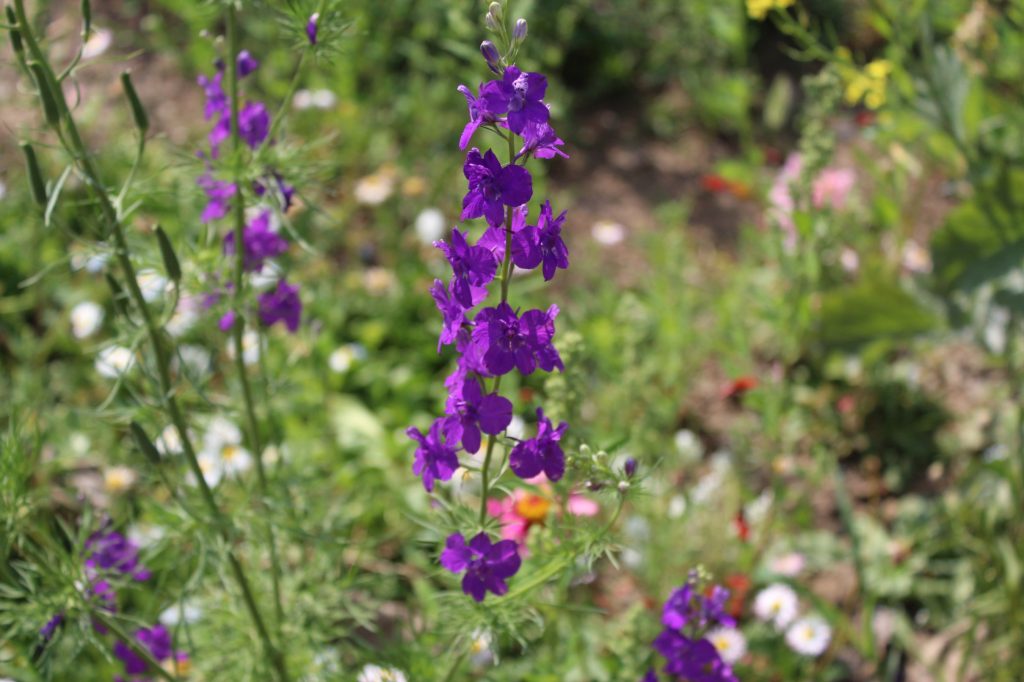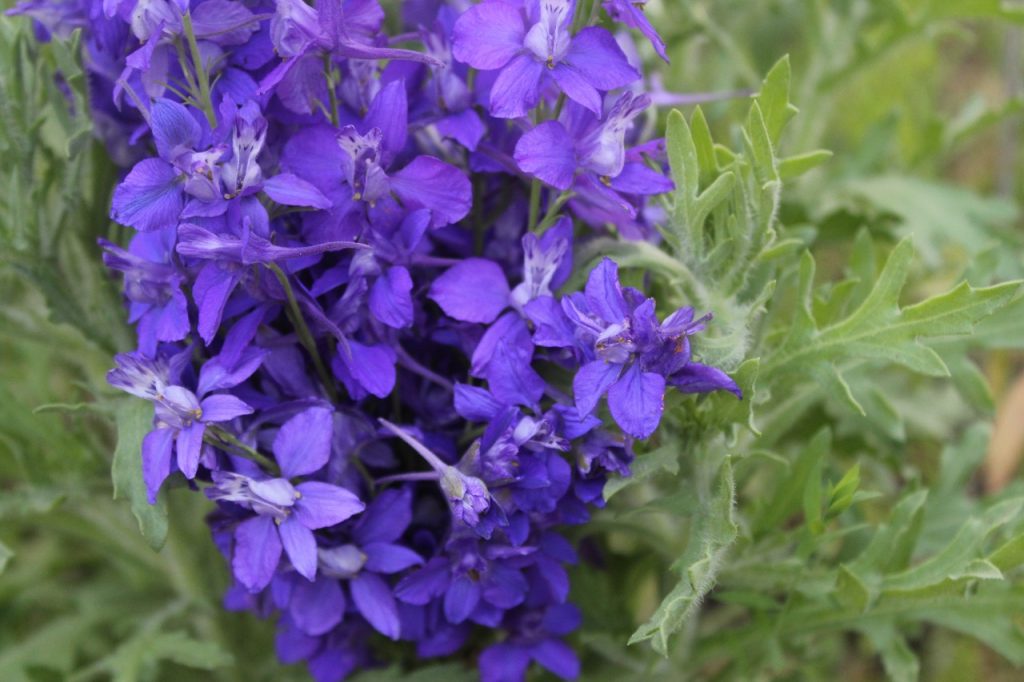Larkspur is a member of herbaceous plants constituting the genus Delphinium of the buttercup family (Ranunculaceae), which are grown for their showy flower stalks. These flowers brighten up your garden with their vibrant colors, feathery foliage, and impressive heights. These are available in more than 60 varieties, having heights ranging from one to seven feet.
The best part about these plants is that their flowers bloom in early spring around July while various flowers are weeks away. These plants are great for backyard beds or lovely vases as the flowers are a show stealer but you need to be careful while planting Larkspur as they are toxic in nature and can be poisonous to both humans and animals.

How to Grow Larkspur
Planting larkspur can be quite difficult because the seeds need a cold period before being sown – and because these toxic beauties can be dangerous! But once they’ve grown into plants, they’re low maintenance and easy to keep alive – even if you are a novice gardener.
Larkspur plants like full sun to partial shade, rich, fertile soil and excellent drainage.
To start Larkspur plants from seeds, sow the seeds in soil and keep soil moist.
Maintain the moisture till the seeds germinate. Germination takes place in 20 to 30 days. The seeds will not germinate if the temperature exceeds 18 degrees Celsius.
Space the seedlings about 8-10 inches once they produce a mature set of leaves. Remove the weakest seedlings.
When planting larkspur, make sure the soil has proper drainage to prevent the roots from rotting and dying. Ensure that the soil is damp at all times for optimal growth as the flowers don’t do well in dry and hot conditions. They also thrive in the sun, which means that you need to pay careful attention to the moisture of the soil. Once Larkspur plants are established, they will thrive until the first frost because they are highly susceptible to frost.


Larkspur Caring Guide
Soil
Larkspur requires rich and fertile soil with excellent drainage.
Maintenance
At the end of the season, once the flowers have turned brown, cut the plants down. Leave only a few in place to ensure they grow again the following year.
Support
Larkspur flowers can grow extremely tall and may require additional support to remain upright, especially in windy conditions.
Usually, they self-sow by dropping their seeds. This means that they’ll easily return in the following year.
Insects and Diseases
Larkspurs are prone to fungal diseases most notably Sclerotium rot which yellows leaves and wilts. It is also affected by mildew. Diseased plants should be removed immediately in order to avoid the disease from spreading.


Are Larkspur Flowers Poisonous?
Unfortunately, this beauty can be deadly!
With the plant easily spread, it can end up in fields where livestock graze. Sadly, this can result in the death of the animal that consumes it. The seeds of the plant are poisonous and should be kept out of reach of animals and children. If consumed, the younger parts of the plant can cause severe digestive issues, and if touched, it can cause severe skin irritation.
Always wash your hands after touching the plant.
Types Of Larkspur Flowers
Cloudy Skies Larkspur
These larkspur flowers can grow up to 90 centimetres tall and feature shades of silver, white, blue, and purple.
Imperial Larkspur
Another tall variety, the imperial larkspur grows to be almost 1-2 metres. It comes in shades of white, blue, purple, pink and rose.
Sublime Larkspur
Also used as a fresh cut flower, the strong stems and colours of sublime larkspur make it useful for dried flower arrangements. It’s available in a wide range of colours and grows to be almost 1-2 metres tall.
These well-pleased are a great addition to your garden but one must take care of its poisonous side as well.

hello!,I like your writing very much! share we communicate more about your article on AOL? I need a specialist on this area to solve my problem. Maybe that’s you! Looking forward to see you.
This really answered my problem, thank you!
Have you ever considered creating an e-book or guest authoring on other blogs? I have a blog based upon on the same topics you discuss and would love to have you share some stories/information. I know my subscribers would appreciate your work. If you are even remotely interested, feel free to send me an e-mail.
Thanks for sharing, this is a fantastic article.Much thanks again. Want more.
wow, awesome article post.Really thank you! Want more.
Be the most effective at every little thing you do!
You have such a kind as well as caring nature. You always have something positive to state.
Everything you need is right here!